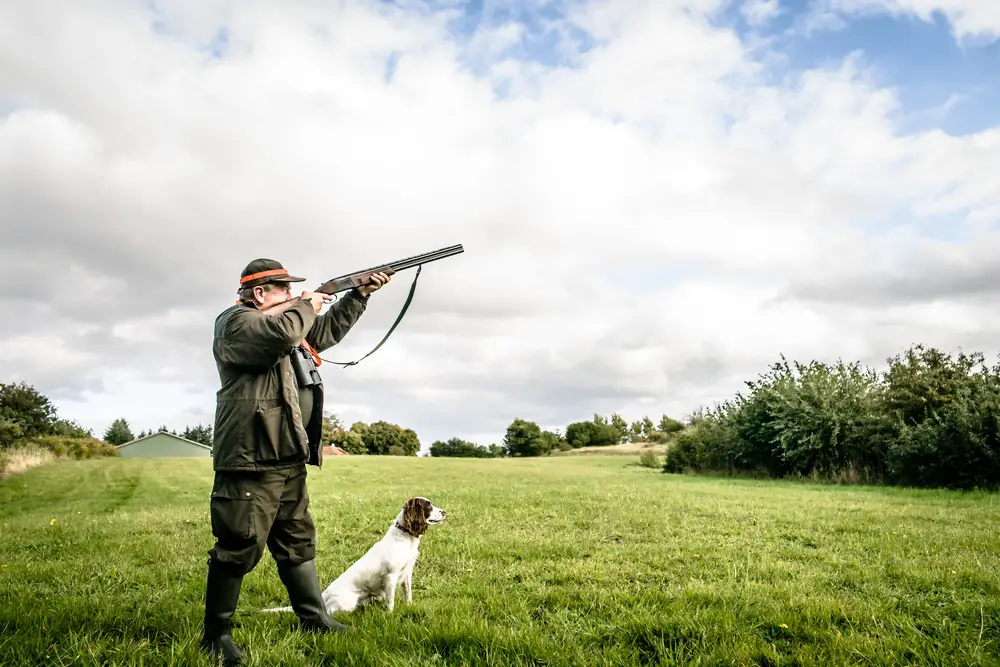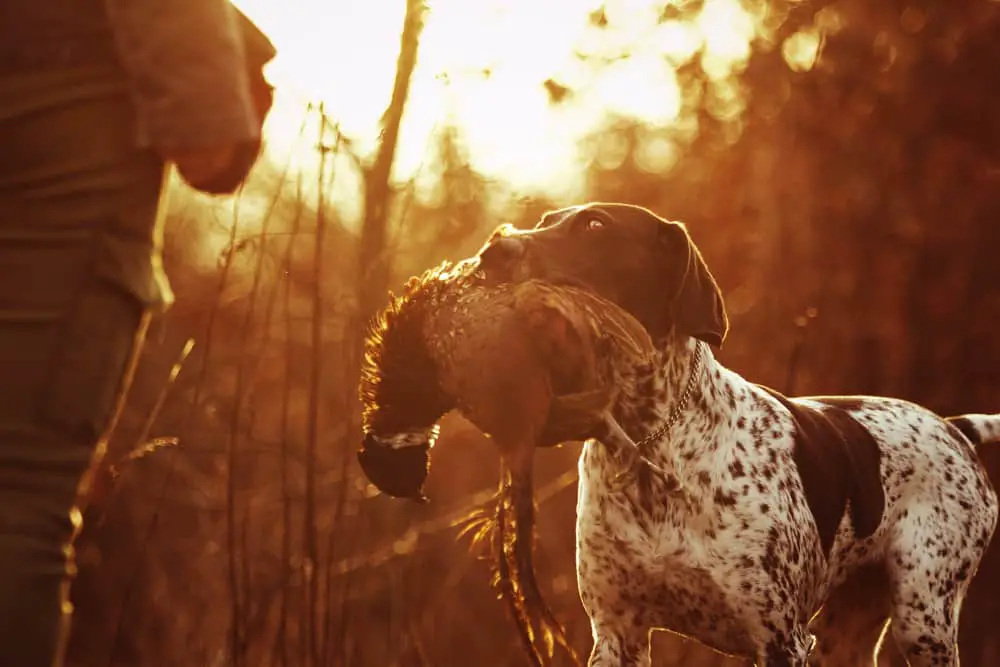As a young hunter, I aspired to have a pack of dogs at my command to go out with me on hunts. They will flush, point and retrieve any game I shoot and bring it to me without hesitation. Boy, was I wrong!. I tried my training skills on an HPR and a flusher, and sometimes I felt like I was in cartoon land.
Although specific skills can be taught, not every dog can be trained to be a gundog. Gundogs have been selectively created using a variety of breeds for their skills. Gundogs must have a keen hunting instinct, lots of courage, high prey drive, a good nose, be a good swimmer, and work in a pack.
Every hunter will have a preferential dog breed that suits their needs, the type of game they prefer to hunt, and the personality traits that best match. Some hunting breeds are better suited to novice hunters, while some need a very experienced hand. Let’s look at what it takes to train a gundog and why some dogs are not suited for this discipline.
What Do Gundogs Do That Other Breeds Don’t?
Setters And Pointers
These breeds are usually worked as individuals or in pairs. One dog will work closely with the handler while the other works in a wider circle. Together they will process scents and smells from their memory bank.
When they come across a familiar scent, they will “show” the handler that there is prey. These breeds will freeze and lock into a point stance, making their bodies stiff, head down towards the prey, one front foot lifted and the tail stiff like an antenna.
If there is more than one dog, the other dogs in the pack will also freeze into the point and wait for the hunter to approach. Here the hunter will encourage the dog to flush the game out, and the dog will go forward, pushing the bird or rabbit with its nose.
After the game is flushed and shot, the dog will be instructed to retrieve the bird or game back to the hunter. Usually, the command “dead” is used.
Types Of Pointers and Setters –
- English Pointer
- German Shorthair Pointer
- Irish Setter
- Weimaraner
Flushing Dogs
Flushing dogs are typically used when hunting upland game. They work in thickets, dense grassland, or wooded areas and do not usually cover large surface areas. They work very close to the hunter so that the shotgun is within range of the flushed game.
Birds such as pheasants require a solid flush to get them out and to fly. Flushing dogs work best with birds such as these because they prevent them from running larger distances.
Once the bird is flushed out, the hunter will use the term “hup,” and the dog will sit. The shot is taken, and then the dog can be sent for the retrieve. These dogs are renowned for their steadiness.
Types Of Flushing Dogs
- English Springer Spaniel
- Boykin Spaniel
- Curly Coated Retriever
- American Water Spaniel
Retrievers
These types of dogs are mainly used to retrieve waterfowl from a dam, lake, or river once shot. They typically love to swim and have webbed toes to assist them in the water. Retrievers are required to be a low-energy type of breed that can remain still and quiet for long periods.
Retrievers are usually brilliant dogs and can “mark” several birds where they fall and retrieve them later. They should also be able to do blind retrieves and follow the handler’s instruction to retrieve birds they did not mark. This is called a blind retrieve.
Retrievers should be able to work under pressure, with lots of noise and many distractions while remaining steady. They can work well with other dogs and not attempt to steal another hunter’s birds.

Can’t Working Dogs Be Gundogs?
While there are many working dog breeds, their purposes are very different. Gundogs are essentially working dogs, but they have a specific function. Dogs like German Shepherds are working dogs, but they are herding and LGD’s or Livestock Guardian Dogs.
Although they are working, they are not fit for the hunting field and do not have the finesse of the abovementioned dog breeds. They might hunt the occasional bird or squirrel, but it has more to do with prey drive.
Working dogs usually excel in obedience training and are typically easy to train. LGD’s have an innate sense of what they are supposed to do, and once shown what they should guard, they will fiercely protect their charges.
Working dogs will not make good gundogs because of their heightened sense to protect and guard.
Types Of Working Dogs That Cannot Be Gundogs
- German Shepherd Dogs
- Rottweilers
- Cane Corso
- Dobermann
- American Bulldog
- Dalmation
- Old English Sheepdogs
These types of working dogs will distinguish between their guard and a threat. They will typically display a high prey drive towards the threat or predator while showing none towards the livestock or property they guard.
How Do You Know Your Dog Will Be A Good Gundog?
As a rule, the breed will indicate a lot in this department. Dogs that were bred to have a keen hunting instinct will already be classified as hunting dogs or gundogs. There are exceptions among hunting dogs as well.
Some dogs cannot be trained to be a good gundog no matter what you do. The reasons for that would be;
- Bad quality breeding
- Nervous disorders
- An inexperienced trainer
- Poor quality training
- Stubbornness
A natural hunting instinct is one aspect of a gundog, but how that is used in the field will guarantee success. A good gundog will sniff, track and stay focused until the prey has been located.
A dog that loses focus or runs off into the distance is not ideal and can cause you to lose prey and a whole day chasing after it. Gundogs need above-average exercise to stay in good physical and mental condition.
Conclusion
Even dogs typically bred to be gundogs can turn out as unsuitable field or upland dogs. The natural hunting instinct gundogs are born with has to be shaped and pointed in the right direction. This would be even more prevalent in the toy or other breeds of dogs.

